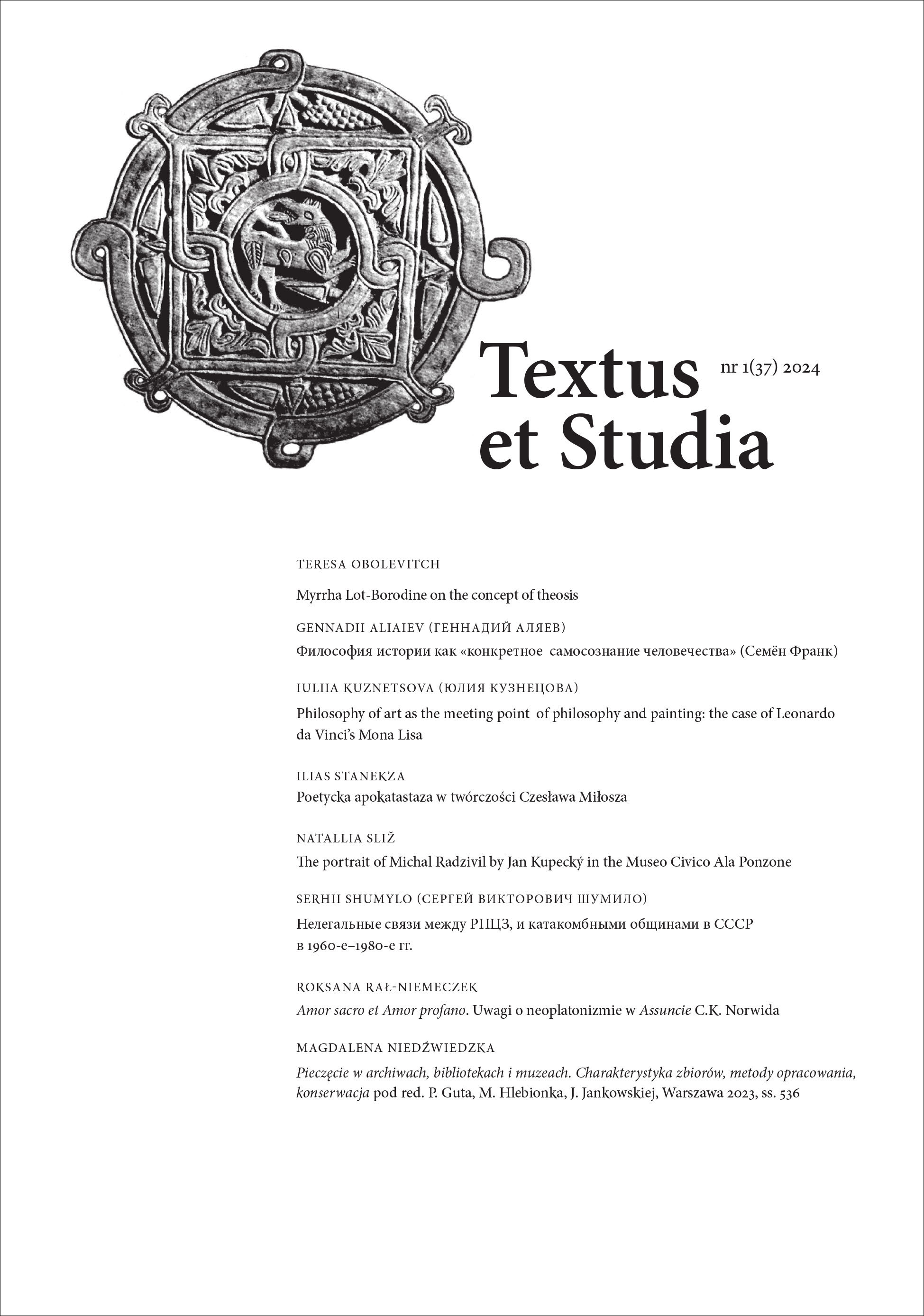The portrait of Michal Radzivil by Jan Kupecký in the Museo Civico Ala Ponzone
DOI:
https://doi.org/10.15633/es.10105Słowa kluczowe:
the portret of Michal Radzivil, Jan Kupecký, Museo Civico Ala PonzoneAbstrakt
The article is devoted to the history of the portrait of Michal Radzivil by Jan Kupecký. The reconstruction of the history of this painting is based on visual sources, documents and biographical information. Attention is paid to the portrait itself and related to it personalities. The Radzivil family was one of the most influential and wealthy in the history of the Grand Duchy of Lithuania (GDL). The main residence was in Niasviž (Belarus). The representatives of this family had diplomatic and matrimonial contacts with the European elite. Scholars paid much attention to the Radzivil’s collection of portraits but the portrait of Michal Radzivil in the Museo Civico Ala Ponzone in Cremona (Italy) is not analysed in historiography.
Jan Kupecký (1666–1740) was the author of this portrait. Michal Radzivil died in 1680. He could not order the painting. Taking into account different facts it is possible to say that Aleksandr Sobieski initiated this process. The cooperation between Kupecký and Sobieski lasted two years in Rome. Later, the portrait became the property of Giuseppe Sigismondo Ala Panzone. It is possible to speak with confidence that the likeness was painted by Kupecký and it never left this country.
Pobrania
Opublikowane
Numer
Dział
Licencja

Utwór dostępny jest na licencji Creative Commons Uznanie autorstwa 4.0 Międzynarodowe.
Autorzy publikujący w czasopiśmie udzielają jego wydawcy zgody o następującej treści:
- Autor zachowuje autorskie prawa majątkowe do utworu, a jednocześnie udziela wydawcy czasopisma zgody na jego pierwszą publikację w wersji drukowanej i wersji online na licencji Creative Commons Uznanie autorstwa 4.0 Międzynarodowe oraz zgody na wykonywanie opracowań, w tym przekładów.
- Autor ma możliwość udzielania zgody niewyłącznej na opublikowanie utworu w wersji, która ukazała się w czasopiśmie (np. zamieszczenia go w repozytorium instytucjonalnym lub opublikowania w książce), wraz z informacją o jego pierwszej publikacji w czasopiśmie.
- Autor może umieścić swój utwór online (np. w repozytorium instytucjonalnym lub na swojej stronie internetowej) jeszcze przed zgłoszeniem utworu do czasopisma.

